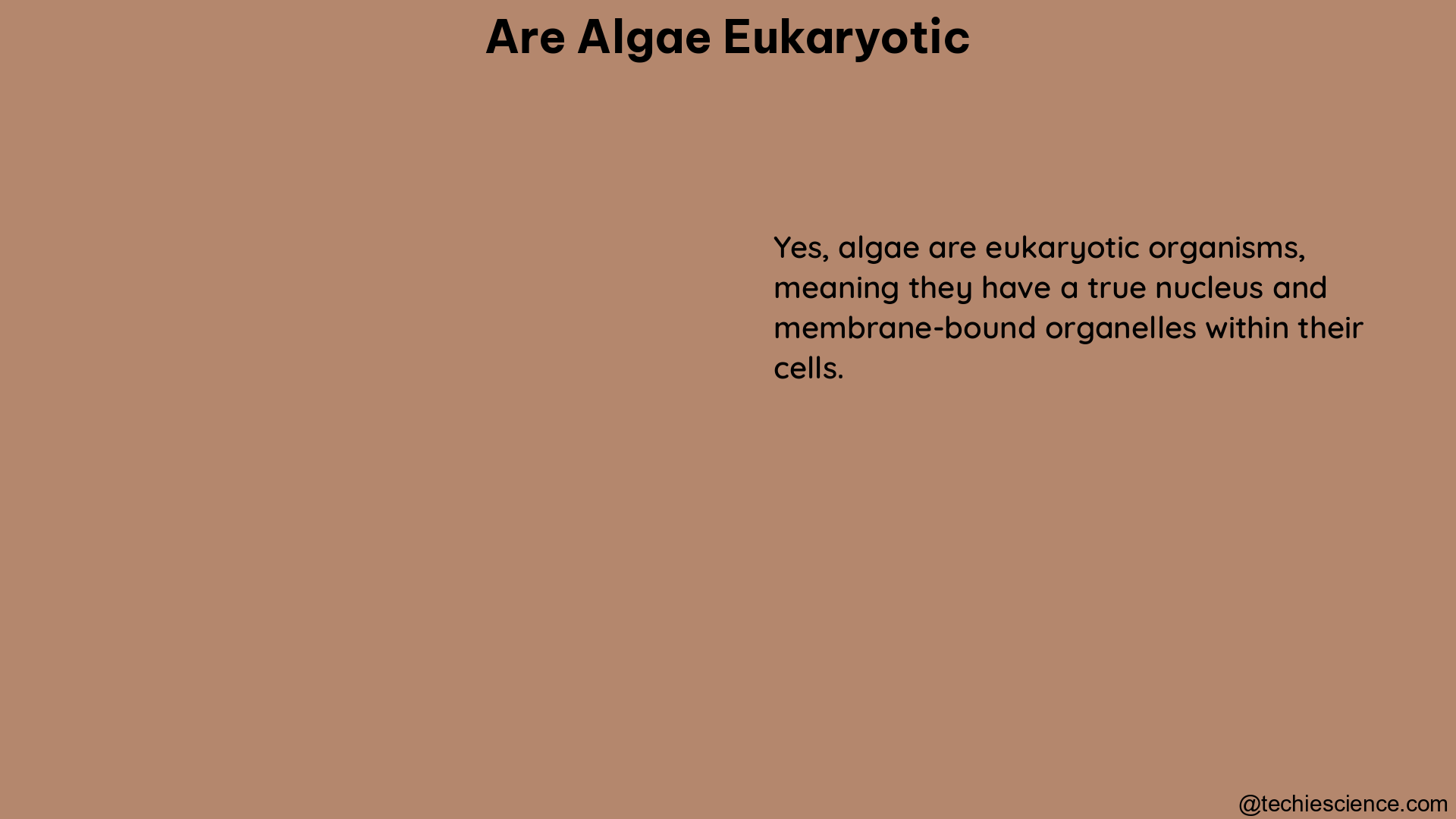Algae are a diverse group of photosynthetic organisms that play a crucial role in the Earth’s ecosystems. Understanding their biological classification is essential for biologists, ecologists, and anyone interested in the natural world. In this comprehensive guide, we will delve into the evidence that supports the classification of algae as eukaryotic organisms, providing a detailed and informative exploration of this topic.
The Eukaryotic Nature of Algae
Algae are eukaryotic organisms, meaning they possess a true nucleus and membrane-bound organelles, such as chloroplasts, mitochondria, and endoplasmic reticulum. This is in contrast to prokaryotic organisms, like bacteria, which lack these distinct cellular structures.
Membrane-Bound Organelles
One of the key pieces of evidence supporting the eukaryotic classification of algae is the presence of membrane-bound organelles within their cells. These organelles, including chloroplasts, mitochondria, and endoplasmic reticulum, are essential for various cellular processes, such as photosynthesis, energy production, and protein synthesis.
- Chloroplasts: Algal chloroplasts are responsible for the photosynthetic capabilities of these organisms, converting light energy into chemical energy in the form of ATP and NADPH.
- Mitochondria: Algal mitochondria are the powerhouses of the cell, generating ATP through the process of oxidative phosphorylation.
- Endoplasmic Reticulum: The endoplasmic reticulum in algal cells is involved in the synthesis, folding, and transport of proteins, as well as the production of lipids and other cellular components.
The presence of these membrane-bound organelles is a hallmark of eukaryotic cells and distinguishes them from the simpler, non-compartmentalized structure of prokaryotic cells.
True Nucleus
Another key characteristic of eukaryotic cells, including algae, is the presence of a true nucleus. The nucleus in algal cells is surrounded by a nuclear membrane and contains the genetic material, organized into chromosomes. This contrasts with the more diffuse and unorganized genetic material found in prokaryotic cells.
The genetic complexity of algae is another indicator of their eukaryotic nature. Algal cells typically have multiple chromosomes and a diverse array of genes involved in various cellular processes, such as cell cycle regulation, DNA replication, and transcription.
Quantitative Data and Measurements
In addition to the structural and genetic evidence, there are several quantitative data points and measurements that support the classification of algae as eukaryotic organisms.
Cell Size
Eukaryotic cells, including algal cells, are generally larger and more complex than their prokaryotic counterparts. Algal cell sizes can range from less than 1 μm to several millimeters in diameter, depending on the species.
Metabolic Activity
The presence and concentration of certain elements, such as nitrogen and phosphorus, can be used as indicators of the metabolic activity of algal cells. These elements are essential for the growth and development of algae and can be quantified using techniques like elemental imaging.
Genetic Complexity
The genetic complexity of algae, as measured by the number of chromosomes and the diversity of genes, is another quantitative indicator of their eukaryotic nature. Algal genomes can range from a few million base pairs to several billion base pairs, reflecting their intricate genetic makeup.
Diversity and Ecological Importance of Eukaryotic Algae

Eukaryotic algae are a highly diverse group of organisms, found in a wide range of aquatic and terrestrial environments. They play a crucial role in the Earth’s ecosystems, serving as the primary producers in many aquatic food webs and contributing to the global carbon cycle through photosynthesis.
Taxonomic Diversity
Eukaryotic algae are classified into several major groups, including:
- Green algae (Chlorophyta)
- Red algae (Rhodophyta)
- Brown algae (Phaeophyceae)
- Diatoms (Bacillariophyta)
- Dinoflagellates (Dinophyta)
- Euglenoids (Euglenophyta)
Each of these groups has unique morphological, physiological, and genetic characteristics, reflecting the vast diversity of eukaryotic algae.
Ecological Roles
Eukaryotic algae are essential components of aquatic and terrestrial ecosystems, performing a variety of critical functions:
- Primary Production: Algae are the primary producers in many aquatic ecosystems, converting light energy into chemical energy through photosynthesis, which forms the foundation of the food web.
- Oxygen Production: Eukaryotic algae are responsible for a significant portion of the world’s oxygen production, contributing to the maintenance of a balanced atmospheric composition.
- Nutrient Cycling: Algae play a crucial role in the cycling of essential nutrients, such as nitrogen and phosphorus, within aquatic and terrestrial environments.
- Bioremediation: Some eukaryotic algae have the ability to remove pollutants and heavy metals from the environment, making them valuable for bioremediation efforts.
- Biotechnology Applications: Eukaryotic algae are increasingly being utilized in various biotechnological applications, such as the production of biofuels, pharmaceuticals, and nutritional supplements.
Conclusion
In conclusion, the available evidence overwhelmingly supports the classification of algae as eukaryotic organisms. From the presence of membrane-bound organelles and a true nucleus to the quantitative data on cell size, metabolic activity, and genetic complexity, the eukaryotic nature of algae is well-established. Understanding the eukaryotic characteristics of algae is crucial for understanding their diverse roles in the natural world and their potential applications in various fields of study and industry.
References
- Quantitative elemental imaging in eukaryotic algae
- Size-dependent growth rates in eukaryotic and prokaryotic algae
- The global explosion of eukaryotic algae: The potential role of phosphorus?
Hi….I am Ganeshprasad DN, completed my Ph.D. in Biochemistry from Mangalore University, I intend to use my knowledge and technical skills to further pursue research in my chosen field.